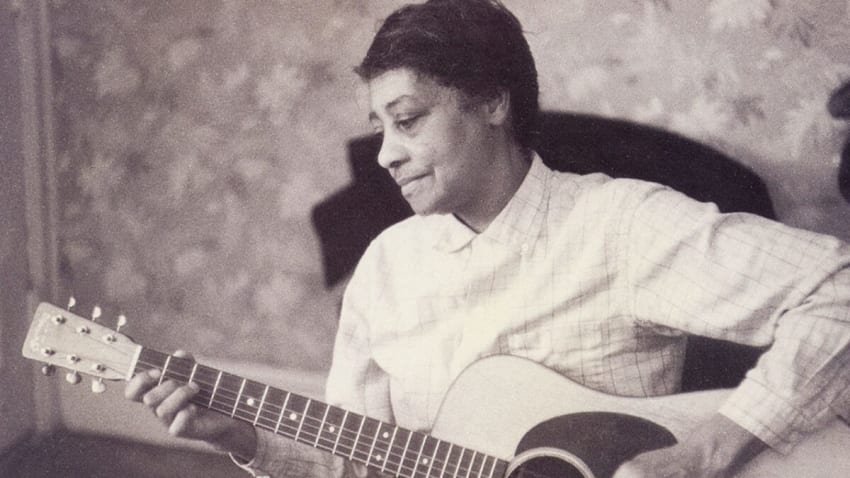Memphis Minnie – Queen Of The Blues Playlist
In honor of Black History Month, stream a playlist featuring the influential guitarist.
By Andy Kahn Feb 19, 2022 • 7:15 am PST

Each week during Black History Month, JamBase will present a playlist highlighting an influential Black guitarist. Today’s installment features the Queen Of The Blues, Memphis Minnie.
Born Lizzie Douglas on June 3, 1897, the musician often said she originated in rural Louisiana, but it is more likely her birth was in northern Mississippi, where she spent her early years. By the time she was a teenager, she had learned to play guitar and banjo and was bestowed her first nickname, “Kid.”
In her teens, she moved to Memphis where she began performing on the street. It is believed that in 1916 she began a several-year-long engagement touring with Ringling Brothers Circus. She returned to Memphis around 1920 and after performing there for a few years, was married to Casey Bill Weldon, though it was short-lived. By 1929 she had married her second husband, Joe McCoy, and together they recorded the song “Bumble Bee,” which was released as “Memphis Minnie” and “Kansas Joe McCoy.” That same year saw them record their co-write, “When The Levee Breaks,” which was later adopted by Led Zeppelin.
According to MemphisMinnie.com’s reprinting of a 1997 article in Acoustic Guitar Magazine:
Starting in 1929, her records lead us through twenty years of recorded blues and illustrate her life, as she moved from the rural South to urban Chicago. Musically there were three basic phases to her style: the duet years with Kansas Joe, the “Melrose” band sound of the late ‘30s and early ‘40s, and her later electric playing. She was always a finger picker, and played in Spanish (DGDGBD) and standard tunings, often using a capo. For guitar players, the first part of her career is definitely the most inspiring, as her inventive variations make masterpieces of tunes like “When The Levee Breaks”(1930) or “Let’s Go To Town”(1931). In terms of her influence on the development of blues, she was an important player in the Chicago clubs during the ’40s when musicians like Muddy Waters, Jimmy Rodgers and Johnny Shines, were coming up …
Minnie and Joe began a steady series of recording dates in New York, and Memphis, first for Columbia, later for Vocalion, Decca, Okeh and Bluebird. Kansas Joe and Minnie were guitarists of equal ability, and the interplay of their instruments is like a great conversation: with both of them switching between treble and bass. The back-up parts are as interesting as the melody parts, especially on tunes like “When the Levee Breaks”, recorded in 1929, in Spanish tuning capoed to Bb (the third fret) or “Crazy Crying Blues” from 1931, also in Spanish, capoed to C# (the sixth fret). It’s rural party music, with doubling of parts helping punch the sound through in a loud environment in the pre-electric age.
Minnie was quick to embrace the latest technologies in order to be heard above the crowds She was one of the first blues players to use a National in 1929, and to play an electric wood body National and various electric guitars in the ’40s and ’50s.
Advertisement
In 1930, the couple moved to Chicago, where Minnie became a prominent member of the city’s burgeoning blues scene. McCoy and Minnie soon went their separate ways, while the latter remained in Chicago. Minnie eventually married Ernest “Little Son Joe” Lawlers with whom she wrote and recorded 1941’s “Me And My Chauffeur Blues.” An uncredited version of the song was recorded by Jefferson Airplane.
Around this time Minnie moved to electric guitar, further solidifying her stylistic influence on the sounds of early blues musicians. Known for her sexually infused lyrics that were particularly provocative given the eras she recorded, Minnie’s seductive songs included “My Butcher Man,” “Good Biscuits,” “Dirty Mother For You” and “Moanin’ the Blues,” among several others.
Memphis Minnie’s career saw additional success with songs such as “Nothing in Rambling” “Please Set A Date” and “In My Girlish Days.” Minnie and Little Son Joe continued to record together into the 1950s. In 1952, Minnie participated in a recording session for the new at-the-time Chess Records label. Her final recordings came in 1958.
After relocating to Memphis due to health issues, Memphis Minnie died on August 6, 1973, at age 76. In 1980, she was posthumously honored with induction into the Blues Foundation’s Hall of Fame. Minnie’s recording of “Me And My Chauffeur Blues” was added to the National Recording Registry in 2019.
According to the Mississippi Blues Trail:
“[Memphis Minnie’s] showmanship and instrumental prowess enabled her to defeat the top bluesmen of Chicago, including Muddy Waters and Big Bill Broonzy, in blues contests. Minnie gained a reputation as a down-home diva who could handle herself, and her men, both on and off the stage.”
The playlist below features many of the above-mentioned songs, as well as Memphis Minnie’s recording of the since-often covered “I’m So Glad,” as well as “I’m Sailin’” which was recorded by Mazzy Star in 1990. The playlist begins with an acoustic version of “Me And My Chauffeur Blues” and ends with a later recorded electric guitar take on the same tune.
Stream the Memphis Minnie the Queen Of The Blues playlist below:


